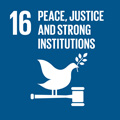- Docente: Davide Dainese
- Credits: 6
- SSD: M-STO/07
- Language: Italian
- Teaching Mode: In-person learning (entirely or partially)
- Campus: Bologna
- Corso: First cycle degree programme (L) in Anthropology, Religions, Oriental Civilizations (cod. 8493)
Learning outcomes
Upon conclusion of the class, students will be familiar with one of the historical forms that Christianity assumed in its encounter with the different cultures of the Mediterranean. They will understand that Orthodox Christianity is the result of the synthesis of the Gospel with the Hellenic culture and that this allowed for the creation – in terms of religious life – of a cultural uniformity that, based on dogmatic unity, encompasses liturgical forms, disciplinary forms, and various forms of spiritual life. In particular, students will be aware that an understanding of this reality proves to be an essential tool for adequate comprehension of the historical-cultural dynamics that, to this day, have determined the physiognomy of continental Europe. Furthermore, students will be able to identify languages and complex concepts related to the discipline in long term perspectives and be able to express them accurately with appropriate terminology.
Course contents
Following the learning outcomes, the class will retrace the main stages of the distancing between the Hellenic East and the Latin West during the first millennium of Christian history until the rupture of communion. Conciliar history will be used as the main gateway and unique perspective to these stages, with the background of the project for the publication of conciliar decisions within the Corpus Christianorum by Brepols (CC-COGD). As such, the class will examine the pre-history of the Orthodox Church as it is commonly understood. Students will follow the emergence of monasticism, the rise and crisis of the pentarchy of apostolic patriarchates, the relation between professions of faith and canonical rules from the outset of the fall of the Roman Empire in the West and the consolidation of the Byzantine Empire.
Topics examined:
- features of ancient synodality and apostolic Christianity
- the Arian crisis and its aftermath
- the great councils of the first millennium
- the iconoclast crisis, the filioquedebate, the controversy of the unleavened
Readings/Bibliography
Mandatory texts:
Primary Sources (texts and introductions):
The Oecumenical Councils: From Nicaea 1. to Nicaea 2. (325-787), ed. by G. Alberigo, Turnhout 2006 [Conciliorum Oecumenicorum Generaliumque Decreta 1];
The Great Councils of the Orthodox Churches. Decisions and Synodika. From Constantinople 861 to Constantinople 1872,ed. by A. Melloni adlaborante D. Dainese, Turnhout 2006 [Conciliorum Oecumenicorum Generaliumque Decreta 4.1], pp.1-39
Literature:
E. Morini, Gli ortodossi, Bologna, Società editrice il Mulino, 2002 ( Farsi un'idea, 77).
E. Morini, Patriarcati, concili, imperatore : ricerche storico-ecclesiologiche tra Oriente e Occidente, Spoleto 2018.
Non-attending students must also read the following:
A. Melloni, Concili, ecumenicità e storia. Note di discussione, in "Cristianesimo nella Storia" 28 (2007), pp. 509-542.
FOR FURTHER STUDY (optional texts):
Ph. Blaudeau, Alexandrie et Constantinople, 451–491. De l’histoire à la géo-ecclésiologie, Roma 2006;
Ph. Blaudeau, Le siège de Rome et l’Orient (448-536). Étude géo-ecclésiologique, Roma 2012.
Teaching methods
Lecture; historical-critical analysis of primary sources. Attendance is not necessary, but attendance will be helpful in assimilating the content that will later be the subject of examination (written or oral, cf. “assessment methods” section).
Assessment methods
Students will have two exam possibilities: either the classic oral exam or an essay of 20 pages written in Italian.
The oral examination will be based on the reading/comments of the sources and on the critical literature and cannot be divided into two successive times. Assessment will be carried out on both the capacity to read ancient texts (also in Italian translation) and specific knowledge of the history of Christianity. Students will be called upon to prove their mastery of specific vocabulary and the knowledge of diachronic data (dates and historical events). The following are examples of potential questions (to be understood as merely a general allusion to a much broader spectrum of questions): “Read and comment the following texts”, “What does Filioque mean?”
In terms of the essay, students who opt for this solution must consider that it involves a 20-page paper that must be written in Italian. It must regard one of the issues of the course or a historiographic problem raised during the lessons. In this case, a more specific bibliography will be indicated.
Assessment scale:
Excellent (with possibility attribution of honors in the case of originality): the attainment of an organic vision of the issues presented during the lessons and their critical use that demonstrates a mastery of content and technical vocabulary.
Average: Mnemonic knowledge and only partially accurate use of technical vocabulary.
Sufficient: Minimal knowledge of the issues (dates and names), without serious errors.
Insufficient: absence of minimum requirements of ‘sufficient’ assessment.
Teaching tools
Microsoft ppt slides
Office hours
See the website of Davide Dainese
SDGs



This teaching activity contributes to the achievement of the Sustainable Development Goals of the UN 2030 Agenda.
